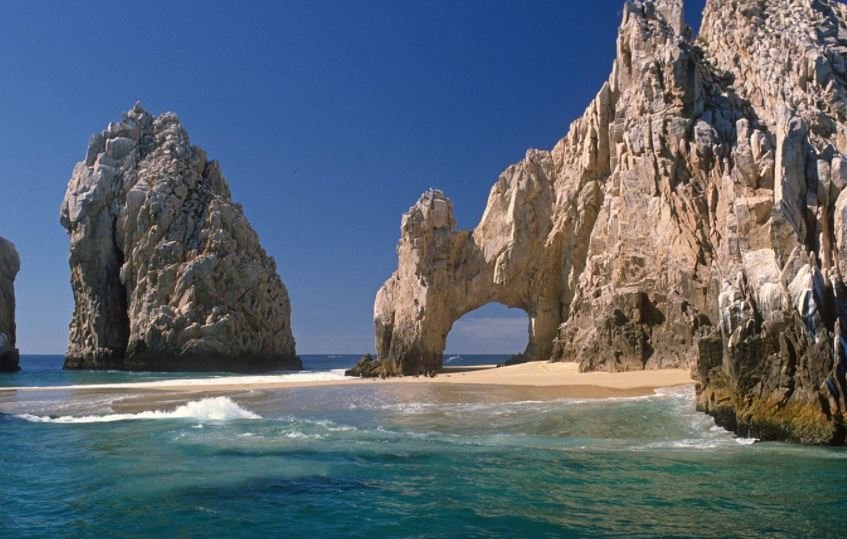Travel
The Arch of Cabo San Lucas, from Legends to Disappearing Beaches

The sun-drenched beauty of Cabo San Lucas is typified by its most iconic and recognizable sight, the honey-colored El Arco. A craggy arch of limestone that defines the Cabo harbor, El Arco is probably the most popular destination for visitors to the area, and is a mandatory photo opportunity. But while most people would recognize the arch of Cabo San Lucas, there are plenty of things that you might not know about this wonderful golden rock formation. So if you are cruising to Mexico from California, why not discover this fascinating, ancient, and beautiful spot?
[lwptoc]
Land’s End
El Arco is often known as Land’s End, as it marks the southernmost point of the second-longest peninsula in the world. The strip of land that makes up the Mexican states of Baja California and Baja California Sur stretches from the US border at Tijuana and San Diego 760 miles down to El Arco – only the Malay Peninsula is longer! It also marks the end of one of the most amazing and storied highways in the world, Highway 1, which winds and curves its way down the coast from the US border all the way to Cabo San Lucas.
Pacific or Gulf?
El Arco also marks the boundary where the mighty Pacific Ocean becomes the Gulf of California, also known as the Sea of Cortez. To the west, the wild Pacific beats against the coast of Baja California, while to the east the calm, warm waters of the Sea of Cortez are home to an astonishing variety of marine life – in fact, the Gulf of California was described as ‘the world’s aquarium’ by Jacques Cousteau! Unsurprisingly, the Sea of Cortez is one of the best places in the world to go scuba diving, with the stunning Cabo Pulmo Marine National Park a highlight, the oldest coral reef on the west coast of the American continent! Cabo San Lucas, and El Arco, in particular, is also one of the best places to get up close and personal with some of the ocean’s most remarkable mammals. You can swim and snorkel with sea lions around the arch itself, or head further out to sea for a stunning humpback whale encounter!
Prehistoric roots
El Arco was formed by wind, waves, and erosion, millions of years ago, and has actually been around far longer than the sea over which it looks! The basement rock of Los Cabos began to be formed over 100 million years ago, and the arch is probably around 30 million years old, however, the Sea of Cortez was only fully formed about 5 million years ago.
Indigienous history
The arch has been a significant place for hundreds, even thousands of years. El Vigia (The Watcher) is the highest point of Land’s End, and is marked by a white cross. Legend has it that it marks the site of an indigenous burial ground. These days this wonderful lookout point offers a stunning panorama and is one of the best places to watch the sun rise or set! It is a challenging hike, without much shade, but more than worth it for the feeling of freedom and adventure you get once you hit the summit!
Disappearing beaches
Today, El Arco is the site of two famous Cabo beaches, Playa del Amor (Love Beach) and Playa del Divorcio (Divorce Beach). But it is less well known that there used to be a beach under the arch itself, as well as others around the various rock stacks that surround it. These sadly disappeared following Hurricane Odile in 2015, but perhaps one day will make a reappearance!
Check out: Some Hidden Costs of Travel You Need to Remember
-

 Celebrity4 weeks ago
Celebrity4 weeks agoIs YNW Melly Out Of Jail? What Is The YNW Melly Release Date, Career, Early Life, And More
-

 Sports4 weeks ago
Sports4 weeks agoMore Than Just a Game: How College Sports Can Shape Your Future
-

 Tech3 weeks ago
Tech3 weeks agoAI Software: Transforming the Future of Technology
-

 Tech3 weeks ago
Tech3 weeks agoAll About Com. Dti. Folder Launcher: Features, Benefits, Tips, And More













